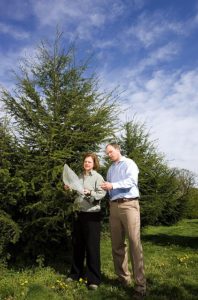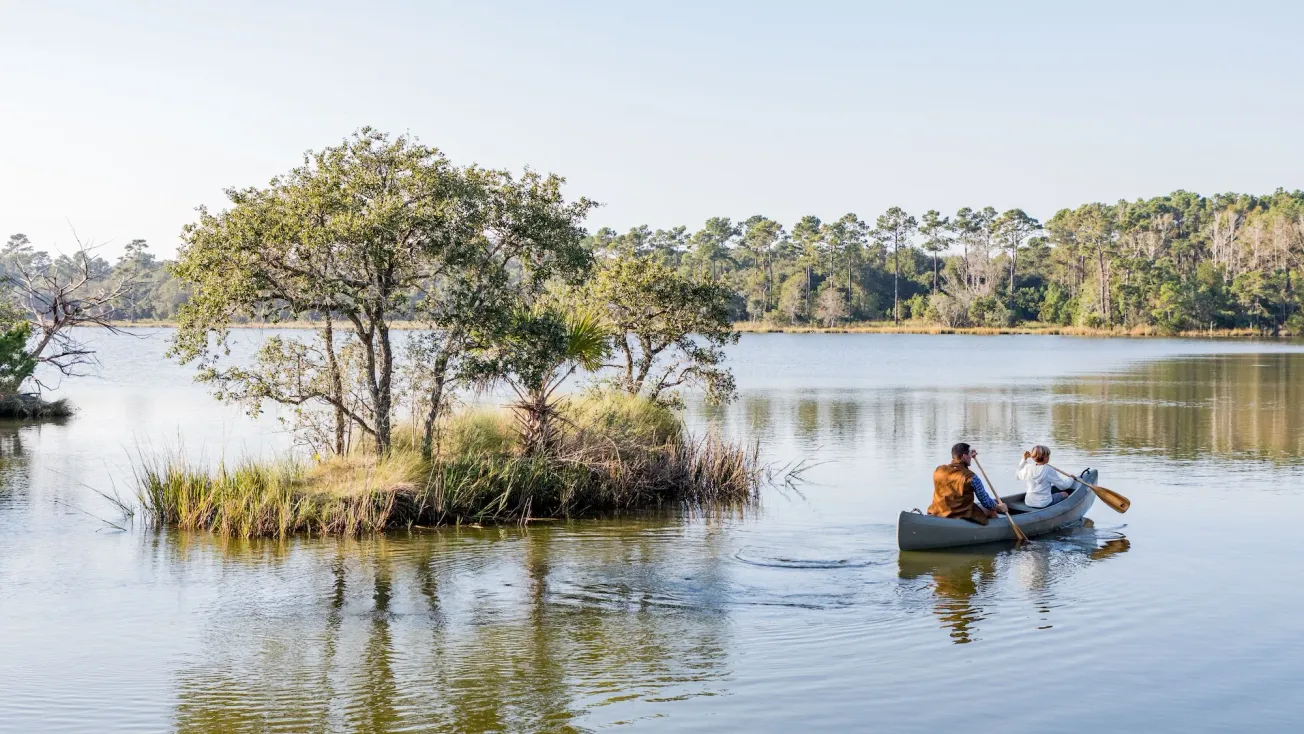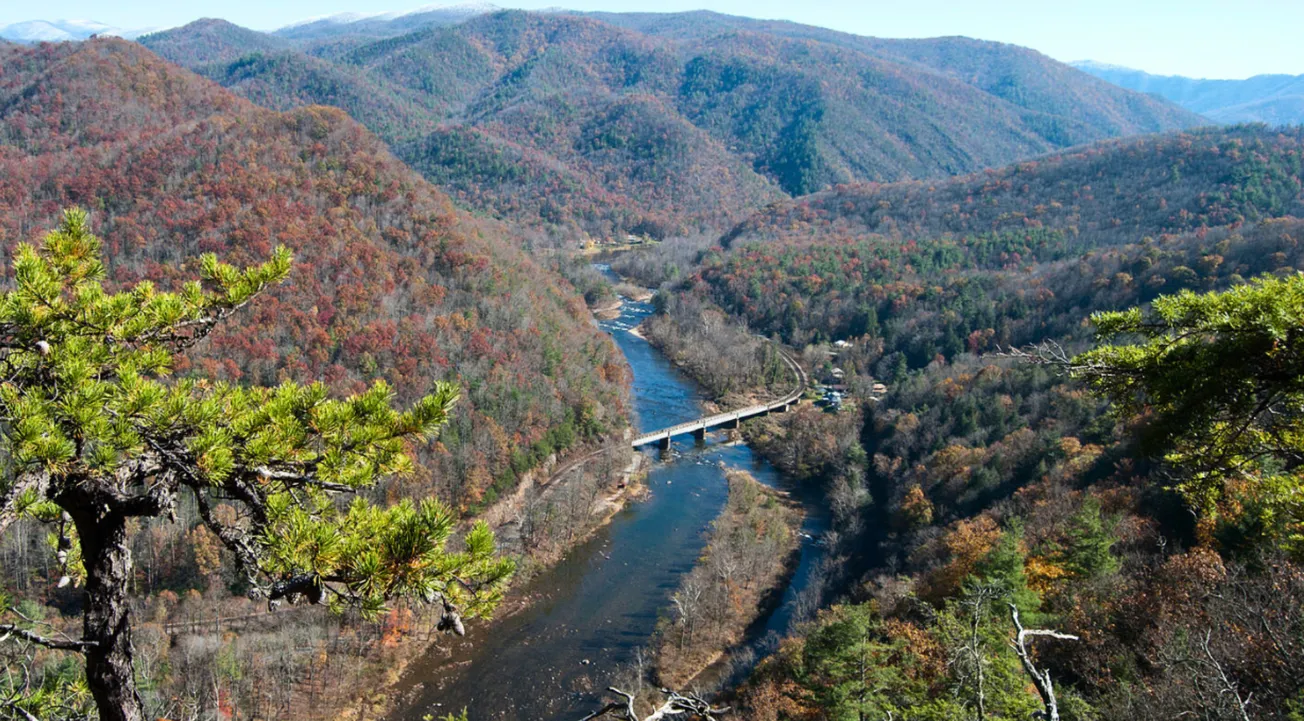Got hemlocks? Look out for these special trees on your land. The hemlock is under threat from an invasive insect species that has particularly taken hold throughout the eastern United States. Native to Asia, the hemlock woolly adelgid first appeared in Richmond, Virginia, in the 1950s, and has since spread with devastating effects. These tiny aphids burrow into the trees and eventually cause them to wither and die over the course of several years.
“The adelgid is about the size of a grain of pepper, and they lay egg sacs that look like cotton balls smaller than a peppercorn,” says Donna Shearer, who founded Save Georgia’s Hemlocks in 2009. Those sacs have anywhere from 30 to 300 eggs, and once hatched the adelgids hook their stylets into the base of the hemlock needles and extract the starches and nutrients the tree needs to perform photosynthesis. A large hemlock will take three to six years to die this way. Insult to injury, a billboard advertising a subdivision named Hemlock caught my eye on a recent drive home. It pierced my heart the way those adelgids pierce the tissue of the hemlock, leaving me afraid the tree was already becoming a thing of the past.

As youngsters, we didn’t think twice about taking to the woods to chop down an eastern hemlock (Tsuga canadensis) for Christmas. We’d flock them and replicate a woodland postcard. The trees’ canopy of drooping branches was the backdrop to our hunting trips in the winter months when ice or light snow would dust them in the forests of Georgia’s Rabun County. We were in Rabun, but hemlocks were in every county in North Georgia and along the Appalachian Mountain range all the way to Maine. They drape the hollers of national forestland and provide canopies for trout streams on public and private lands. But in 2002, an infestation of the hemlock woolly adelgid entered Rabun County and traveled 15 to 20 miles a year across the state to Dade County in 2012 before entering Alabama. They are hitchhikers, catching lifts on birds, squirrels and deer.

Save Georgia’s Hemlocks is stepping up to stem the tide of the hemlock’s decline. The company has helped hundreds of property owners save thousands of trees. Short-term, they are educating property owners about the use of chemical controls like Imidacloprid, which is applied to the base of the hemlock. With the tree’s root system right below, runoff into streams and wells is not an issue, nor is drift to beneficial insects like honeybees. Similar to a tick collar, the chemical enters the tree tissue and poisons the adelgid when it attacks.
Long-term, scientist are working to create a woolly adelgid-resistant hemlock, while one other expensive option involves importing predator beetles, Sasajiscymnus tsugae, from Asia. They are also now being raised at Georgia’s Young Harris College and the University of North Georgia, but at only one generation a year, which makes it slow-going in keeping up the fight against the spread of adelgid throughout the United States.
In the Pacific Northwest, a species of indigenous beetles known as Scymnus coniferarum has co-evolved with the hemlock and the adelgid. These beetles, found in Oregon and Washington, don’t need to cycle through the lab. Researchers from North Carolina are traveling there to collect them from parks, where—get this—they bang on the trees with a pole so the beetles fall into light-colored umbrellas. They are about the size of a sesame seed, and researchers use a pipette to put them in a jar and drive them back to the South where they are carefully released.
The hemlock crowd is a cool one made up of citizen scientists and university researchers. They even have an annual festival, HemlockFest, held over the first weekend in November each year in the mountains south of Dahlonega, Georgia.
And if you don’t have time for a Pacific Northwest road trip, purchase predator beetles online. Those guys like to eat one thing: the hemlock woolly adelgid. If we want to keep the hemlocks, it is our turn to buy dinner.

Heather Richie is Wade & Wallow's digital editor and has also written for Oxford American, Fly Fisherman, Sporting Classics, and Garden & Gun. A graduate of College of Charleston and Sewanee: The University of the South, her MFA thesis FULL: A Slim Volume on Southern Foodways was accepted for publication by Louisiana State University Press.









